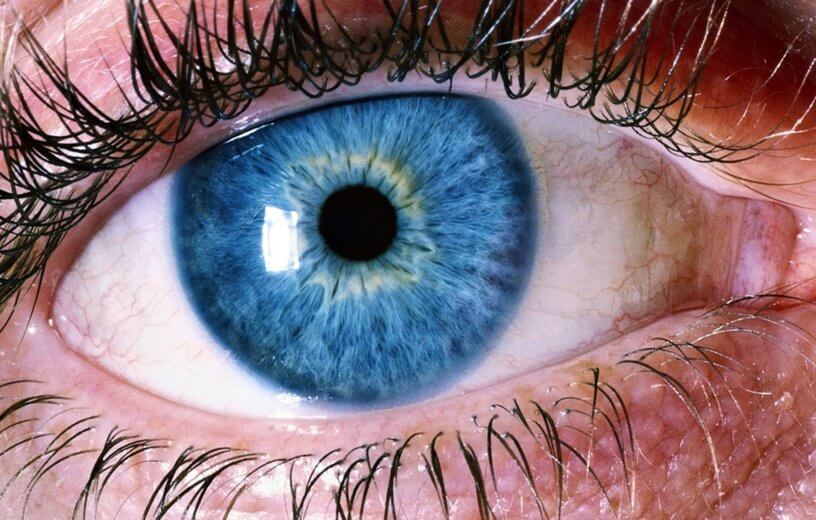Doctor: “Our results suggest this method is safe and could potentially revolutionize the treatment of the eye and many other organs affected by aging.”
BOSTON, Mass. — A cure for blindness could be on the horizon after a team from Harvard Medical School reports they’ve successfully restored vision loss due to glaucoma in mice.
Scientists achieved the feat by turning back the clocks of eye cells using a cocktail of proteins. It is the first time complex tissue has been “reprogrammed” to an earlier age. Clinical trials are set to start within the next two years. The groundbreaking technique is expected to work just as well in humans and may also conquer other neurological diseases, including dementia.
Researchers add this new study sheds fresh light on the mechanisms behind growing old; pointing to a therapeutic target for a host of conditions.
“Our study demonstrates that it’s possible to safely reverse the age of complex tissues such as the retina and restore its youthful biological function,” senior author Professor David Sinclair says in a university release.
According to the Centers for Disease Control and Prevention, over four million people over 40 are legally blind or living with low eyesight in the United States. The team at Harvard made use of a harmless virus to deliver three genes into the retinas of lab rodents with glaucoma — the most common cause of human blindness.
‘Findings could be transformative for vision diseases like glaucoma’
Called Oct4, Sox2, and Klf4, these proteins are transcription factors that are switched on during embryonic development. Researchers say the procedure also worked similarly well in elderly mice with diminishing sight due to normal aging.
Afterwards, gene expression patterns and electrical signals of the cells returned to a similar state as in young mice, including improved vision. Study authors explain that their technique could actually heal the damaged optic nerves in the mice with glaucoma.
Although they reside in the eyes and technically outside the skull, the retinal ganglion cells (RGCs) are brain neurons. The team believes their approach can work in restoring other organs too.
“If affirmed through further studies, these findings could be transformative for the care of age-related vision diseases like glaucoma and to the fields of biology and medical therapeutics for disease at large,” Prof. Sinclair explains.
The study focuses on the “epigenetic clock,” the aging equivalent of the body clock. It tells genes to switch on or off. It is believed changes to it, either through our DNA or the environment, cause cells to malfunction and trigger age-related diseases.
One of the most important gene processes is methylation. DNA methylation can prevent certain genes from expressing themselves. This, for example, may stop tumor-causing genes from turning themselves on and causing diseases like cancer.
At the same time, genes that should be switched on get turned off and vice versa, resulting in impaired cell function. Over time, methylation also causes DNA to lose their more youthful patterns.
Like having new eyes
Past work achieved the feat in cells grown in laboratory dishes, but failed to demonstrate the effect in living organisms. Prof. Sinclair and his team targeted cells in the central nervous system as it’s the first place in the body affected by aging. After birth, its ability to regenerate declines rapidly. The results reveal that treatment doubled the number of surviving cells after optic nerve injury and increased regrowth five times.
“At the beginning of this project, many of our colleagues said our approach would fail or would be too dangerous to ever be used,” study author Dr. Yuancheng Lu explains. “Our results suggest this method is safe and could potentially revolutionize the treatment of the eye and many other organs affected by aging.”
In mice with glaucoma, it boosted nerve cell electrical activity and sharpened sight. They could see moving vertical lines on a screen better, even after vision loss had already occurred.
“Regaining visual function after the injury occurred has rarely been demonstrated by scientists,” co-author Prof. Bruce Ksander adds. “This new approach, which successfully reverses multiple causes of vision loss in mice without the need for a retinal transplant, represents a new treatment modality in regenerative medicine.”
Treatment could help the elderly too
The treatment worked just as well in 12 month-old mice with diminishing vision due to normal aging. These mice are the equivalent of a person in their 60s. An analysis of molecular changes in treated cells identified reversed patterns of DNA methylation, suggesting it is a driving factor in aging.
“What this tells us is the clock doesn’t just represent time—it is time,” Sinclair concludes. “If you wind the hands of the clock back, time also goes backward.”
The team describes the findings so far as “encouraging.” Full body treatment of the mice with the three-gene procedure has produced no negative side effects after a year of testing.
The results appear in the journal Nature.
SWNS writer Mark Waghorn contributed to this report.

I am
Really impressed about this blindness treatment success in mice. Can you try the same procedure in the human being. I have my sister age around 76 she lost vision completely after glaucoma. If this become successful that would be miracle for her.let me know please.
It was recently successful in a non-human primate model and human trials are slated for next year